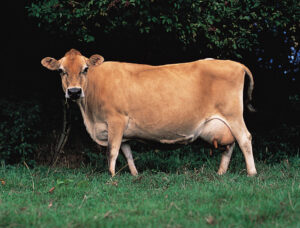Jersey finger is a common hand injury that occurs when the flexor tendon of the finger is forcibly pulled away from its attachment site on the bone. This type of injury is typically seen in athletes, especially those involved in contact sports such as football or rugby. However, it can also occur in everyday situations, such as when grabbing onto a falling object or during a vigorous handshake.
In this article, we will explore the characteristics of jersey finger, including its causes, symptoms, diagnosis, treatment options, and prevention strategies. By understanding these key aspects, individuals can better recognize and manage this injury, potentially reducing the risk of long-term complications.
Causes of Jersey Finger
Jersey finger is primarily caused by a sudden and forceful extension of the finger while the flexor tendon is actively contracting. This can happen in various scenarios, including:
- Tackling an opponent in contact sports
- Trying to catch a ball
- Attempting to prevent a fall
- Engaging in activities that require a strong grip
When the finger is forcefully extended, the flexor tendon can be pulled away from its attachment site on the bone, leading to a jersey finger injury.
Symptoms of Jersey Finger
The symptoms of jersey finger can vary depending on the severity of the injury. However, common signs and symptoms include:
- Pain and tenderness at the site of the injury
- Swelling and bruising of the finger
- Inability to flex the affected finger
- A visible deformity or drooping of the finger
In some cases, there may also be a popping or tearing sensation at the time of injury.
Diagnosis of Jersey Finger
If jersey finger is suspected, it is important to seek medical attention promptly. A healthcare professional, such as an orthopedic surgeon or hand specialist, will perform a thorough examination of the finger to assess the extent of the injury.
The diagnosis may involve:
- Physical examination: The healthcare professional will carefully examine the finger, looking for signs of deformity, swelling, or bruising.
- Range of motion testing: The ability to flex and extend the finger will be assessed to determine the extent of tendon damage.
- Imaging tests: X-rays or other imaging tests may be ordered to rule out any associated fractures or other injuries.
Based on the findings, the healthcare professional will determine the severity of the jersey finger and recommend an appropriate treatment plan.
Treatment Options for Jersey Finger
The treatment for jersey finger typically involves surgical repair of the flexor tendon. Depending on the severity of the injury, the surgeon may use different techniques to reattach the tendon to the bone. Common surgical approaches include:
- Tendon reattachment: The surgeon will carefully reattach the torn tendon to its original attachment site using sutures or anchors.
- Tendon grafting: In cases where the tendon is severely damaged or cannot be repaired, a tendon graft from another part of the body may be used to replace the torn tendon.
After surgery, the finger will be immobilized with a splint or cast to allow for proper healing. Physical therapy may also be recommended to regain strength and range of motion in the finger.
Prevention Strategies for Jersey Finger
While it may not be possible to completely prevent jersey finger, there are some strategies that individuals can follow to reduce the risk of injury. These include:
- Wearing protective gear: Athletes should wear appropriate protective gear, such as gloves or finger splints, to minimize the risk of finger injuries.
- Proper technique: Learning and using proper techniques when participating in sports or engaging in activities that involve gripping can help reduce the risk of jersey finger.
- Strength and flexibility training: Regularly participating in strength and flexibility exercises can help improve finger strength and resilience, reducing the likelihood of injury.
- Being cautious during physical activities: Being aware of the surroundings and taking precautions, such as avoiding unnecessary risks, can help prevent jersey finger.
By incorporating these prevention strategies into daily routines, individuals can minimize the risk of jersey finger and other finger injuries.
FAQs About Jersey Finger
1. Can jersey finger occur in non-athletes?
Yes, jersey finger can occur in non-athletes as well. It can happen during various everyday activities that involve a forceful extension of the finger while the flexor tendon is contracting.
2. Is surgery always necessary for jersey finger?
In most cases, jersey finger requires surgical repair to ensure proper healing and restore finger function. However, the severity of the injury and the specific circumstances may influence the treatment approach.
3. How long does it take to recover from jersey finger surgery?
The recovery period can vary depending on the individual and the extent of the injury. Generally, it takes several weeks to months for the finger to heal completely and regain full function.
4. Can jersey finger lead to long-term complications?
If not properly treated, jersey finger can lead to long-term complications, such as stiffness, weakness, and reduced range of motion in the affected finger. Prompt medical attention and appropriate treatment can help minimize these complications.
5. Can jersey finger be prevented?
While it may not be possible to prevent jersey finger completely, following proper techniques, wearing protective gear, and engaging in strength and flexibility exercises can help reduce the risk of this injury.
Conclusion
Jersey finger is a common hand injury characterized by the forcible pulling of the flexor tendon away from its attachment site on the bone. It can occur in athletes and non-athletes alike and is typically caused by a forceful extension of the finger while the tendon is contracting. Prompt diagnosis and surgical repair are often necessary for optimal recovery and restoration of finger function. By following prevention strategies, individuals can reduce the risk of jersey finger and take steps towards maintaining healthy and functional fingers.
FAQs After The Conclusion
1. Can jersey finger occur in non-athletes?
Yes, jersey finger can occur in non-athletes as well. It can happen during various everyday activities that involve a forceful extension of the finger while the flexor tendon is contracting.
2. Is surgery always necessary for jersey finger?
In most cases, jersey finger requires surgical repair to ensure proper healing and restore finger function. However, the severity of the injury and the specific circumstances may influence the treatment approach.
3. How long does it take to recover from jersey finger surgery?
The recovery period can vary depending on the individual and the extent of the injury. Generally, it takes several weeks to months for the finger to heal completely and regain full function.
4. Can jersey finger lead to long-term complications?
If not properly treated, jersey finger can lead to long-term complications, such as stiffness, weakness, and reduced range of motion in the affected finger. Prompt medical attention and appropriate treatment can help minimize these complications.
5. Can jersey finger be prevented?
While it may not be possible to prevent jersey finger completely, following proper techniques, wearing protective gear, and engaging in strength and flexibility exercises can help reduce the risk of this injury.
Summary
Jersey finger is a hand injury characterized by the forcible pulling of the flexor tendon away from its attachment site on the bone. It commonly occurs in athletes but can also happen in everyday situations. Symptoms include pain, swelling, and an inability to flex the affected finger. Prompt diagnosis and surgical repair are often necessary for optimal recovery. Prevention strategies, such as wearing protective gear and practicing proper techniques, can help reduce the risk of jersey finger. By understanding the characteristics of this injury and taking preventive measures, individuals can maintain healthy and functional fingers.



